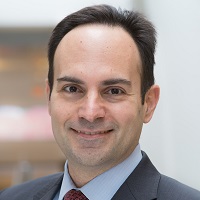A Frugal Saver's Guide to Spotting Investment Costs
Some of the fees that come with buying or holding stocks, bonds and other investments are obvious. Others can hide in plain sight.


My parents instilled good values in me that I try to pass down to my kids. One of these values is thriftiness. When we were growing up, an attic fan cooled us off on warm summer evenings. We reserved the air conditioning for unbearably hot days. When we did run the air, we were sure to close the door behind us so that we didn’t cool off the neighborhood. My dad also seemed to have a sixth sense for detecting lights that didn’t need to be on. Paying attention to these details helped our family keep more of what we earned.
Vanguard founder Jack Bogle revolutionized the investment industry by getting investors to focus on the pernicious effect of costs on investment returns. I must have heard Bogle say, “You get what you don’t pay for” as often as I heard my dad ask me to turn off a light. Bogle’s understanding, backed by research, is why minimizing costs is one of the four Vanguard principles for investing success.
But for both households and investments, some costs are harder to see than others.
From just $107.88 $24.99 for Kiplinger Personal Finance
Become a smarter, better informed investor. Subscribe from just $107.88 $24.99, plus get up to 4 Special Issues

Sign up for Kiplinger’s Free Newsletters
Profit and prosper with the best of expert advice on investing, taxes, retirement, personal finance and more - straight to your e-mail.
Profit and prosper with the best of expert advice - straight to your e-mail.
The investment costs you can see
The easiest costs to spot are explicit costs. For example, you typically pay a fee for buying or selling a fund or security over the phone. These costs are plain to see and can often be avoided by interacting online, just as you often are charged a convenience fee if you pay your utility bill over the phone as opposed to using autopay.
Other explicit costs require a bit of math. For example, mutual funds and exchange-traded funds (ETFs) charge an expense ratio, a fee that’s an annualized percentage of the assets in the fund, to cover its operating costs. Think of an expense ratio like your electric rate per kilowatt. If you invested $10,000 in an ETF with an expense ratio of 0.10%, you would pay roughly $10 in expenses for the year ($10,000 x 0.10% = $10).
Costs are the best predictors of future returns of funds with a similar investment strategy, according to research from Vanguard — but maybe not in the way you’d expect. The higher the average expense ratio, the lower the average return. The fund information you receive will show the expense ratio and total assets in your fund. Like interest, costs compound and can really add up over time.
The costs that are harder to spot
Then there are opaque costs, or costs that don’t show up on a statement or trade confirmation. An example of an opaque investment cost is the difference between the highest price a buyer is willing to pay and the lowest price a seller is willing to take, which is known as the spread. Unless you execute your trade at the midpoint of that spread, you will likely pay a little more for a security or get a little less from the sale than the market price. Some of that spread cost may be attributed to a “payment for order flow” — a practice where the brokerage essentially pockets a slice of your proceeds every time you trade. Most, but not all, brokerages accept payment for order flow.
Spread and payment for order flow costs are higher the more you trade; and they tend to be larger for securities that are less liquid, or harder to trade, and for riskier securities, such as options. Even if you use a zero-commission broker, you are likely paying these opaque costs. These costs are like having a leaky pipe or drafty window that unknowingly boosts your utility bill.
Some costs take a little more thought
The last set of costs are opportunity costs. They come from missed opportunities rather than explicit or implicit charges. For example, the yield on cash sitting in your brokerage account, bank savings account or bank certificate of deposit (CD) may be significantly less than what you could earn if you don’t shop around. Or you may not be taking full advantage of your 401(k) match if your company offers one.
If you have a long-term investment goal and you have the ability to tolerate inevitable ups and downs, not being fully invested in stocks and bonds may create big opportunity costs. It’s like sticking with your current utility company when you could switch to one that costs less or more closely matches your needs and values.
Costs matter for investing and savings success — the ones you see, the ones you don’t, and those missed opportunities. You can’t control the markets or interest rates, but you can control the costs you pay. Every time my children excitedly share when they score a deal, pay off their credit card in full to avoid interest, or turn off a light, I couldn't be prouder.
Note: All investing is subject to risk, including the possible loss of the money you invest.
Related Content
- Best Index Funds for a Low-Priced Portfolio
- Should I Pay a Financial Adviser an Assets Under Management Fee?
- What Everybody Needs to Know About Investment Fees
- What Is an Index Fund and Should I Invest in One?
- Kip ETF 20: The Best Cheap ETFs You Can Buy
Profit and prosper with the best of Kiplinger's advice on investing, taxes, retirement, personal finance and much more. Delivered daily. Enter your email in the box and click Sign Me Up.

James Martielli, CFA®, CAIA®, heads Investment Product, Personal Investor, which is responsible for designing and enhancing Vanguard's brokerage and investment product offer, amplifying distribution efforts and shaping the investment methodology that fuels unmatched investment and savings outcomes for our clients. Previously, James led Investment & Trading Services (ITS), which educates individual investors about Vanguard's products and provides trade execution for the securities and products on Vanguard's retail brokerage platform.
-
 Dow Adds 646 Points, Hits New Highs: Stock Market Today
Dow Adds 646 Points, Hits New Highs: Stock Market TodayIt was "boom" for the Dow but "bust" for the Nasdaq following a December Fed meeting that was less hawkish than expected.
-
 5 Types of Gifts the IRS Won’t Tax: Even If They’re Big
5 Types of Gifts the IRS Won’t Tax: Even If They’re BigGift Tax Several categories of gifts don’t count toward annual gift tax limits. Here's what you need to know.
-
 The 'Scrooge' Strategy: How to Turn Your Old Junk Into a Tax Deduction
The 'Scrooge' Strategy: How to Turn Your Old Junk Into a Tax DeductionTax Deductions We break down the IRS rules for non-cash charitable contributions. Plus, here's a handy checklist before you donate to charity this year.
-
 Dow Adds 646 Points, Hits New Highs: Stock Market Today
Dow Adds 646 Points, Hits New Highs: Stock Market TodayIt was "boom" for the Dow but "bust" for the Nasdaq following a December Fed meeting that was less hawkish than expected.
-
 What You Need to Do With Your 401(k) Before 2025 Is Over
What You Need to Do With Your 401(k) Before 2025 Is OverBefore 2025 ends, check your 401(k) contributions, investments, and catch-up eligibility to lock in this year’s tax savings and employer match.
-
 I'm a Tax Attorney: These Are the Year-End Tax Moves You Can't Afford to Miss
I'm a Tax Attorney: These Are the Year-End Tax Moves You Can't Afford to MissDon't miss out on this prime time to maximize contributions to your retirement accounts, do Roth conversions and capture investment gains.
-
 I'm an Investment Adviser: This Is the Tax Diversification Strategy You Need for Your Retirement Income
I'm an Investment Adviser: This Is the Tax Diversification Strategy You Need for Your Retirement IncomeSpreading savings across three "tax buckets" — pretax, Roth and taxable — can help give retirees the flexibility to control when and how much taxes they pay.
-
 Dow Rises 497 Points on December Rate Cut: Stock Market Today
Dow Rises 497 Points on December Rate Cut: Stock Market TodayThe basic questions for market participants and policymakers remain the same after a widely expected Fed rate cut.
-
 I'm Retired With $2.2 Million Saved and Work 2 Retail Shifts a Week for Fun. My Young Colleague Just Got Her Hours Cut. Should I Quit So She Can Have My Shifts?
I'm Retired With $2.2 Million Saved and Work 2 Retail Shifts a Week for Fun. My Young Colleague Just Got Her Hours Cut. Should I Quit So She Can Have My Shifts?Should she quit her job so a struggling young colleague can take her shifts? We asked certified financial planners for advice.
-
 Could an Annuity Be Your Retirement Safety Net? 4 Key Considerations
Could an Annuity Be Your Retirement Safety Net? 4 Key ConsiderationsMore people are considering annuities to achieve tax-deferred growth and guaranteed income, but deciding if they are right for you depends on these key factors.
-
 I'm a Financial Pro: Older Taxpayers Really Won't Want to Miss Out on This Hefty (Temporary) Tax Break
I'm a Financial Pro: Older Taxpayers Really Won't Want to Miss Out on This Hefty (Temporary) Tax BreakIf you're age 65 or older, you can claim a "bonus" tax deduction of up to $6,000 through 2028 that can be stacked on top of other deductions.